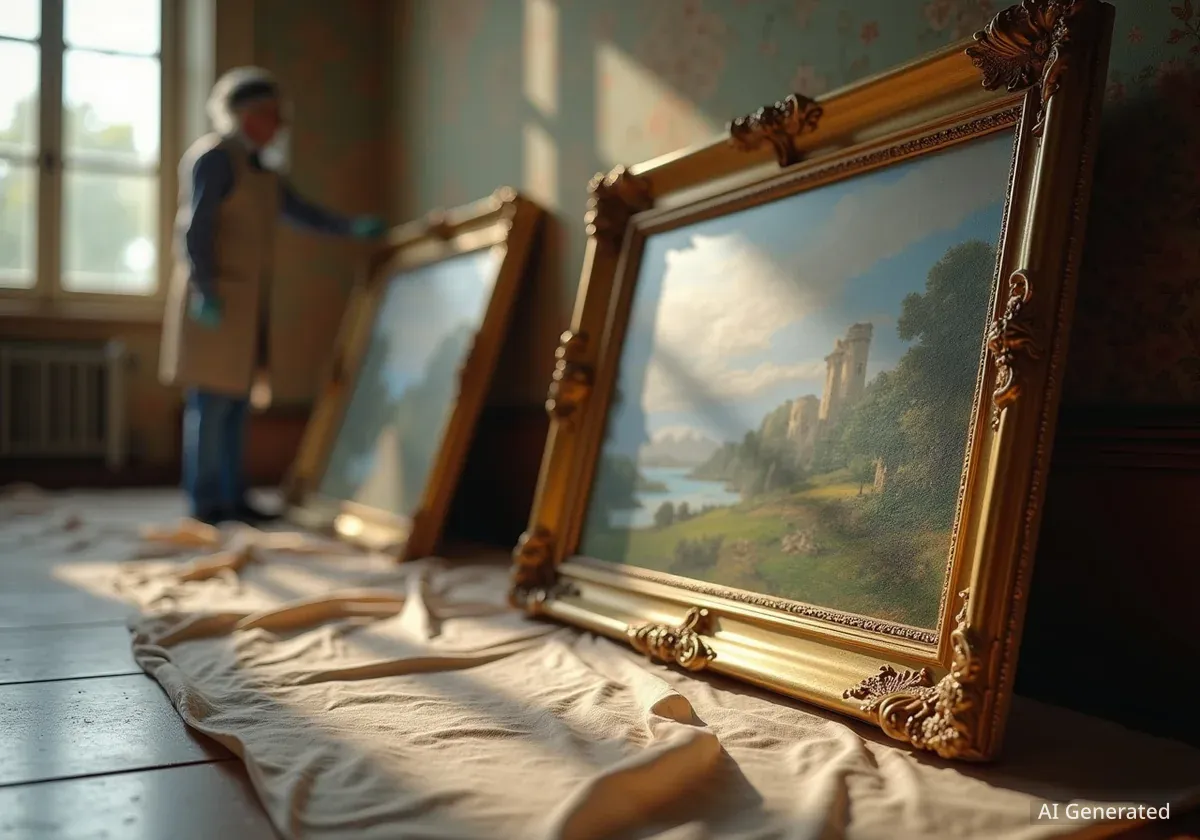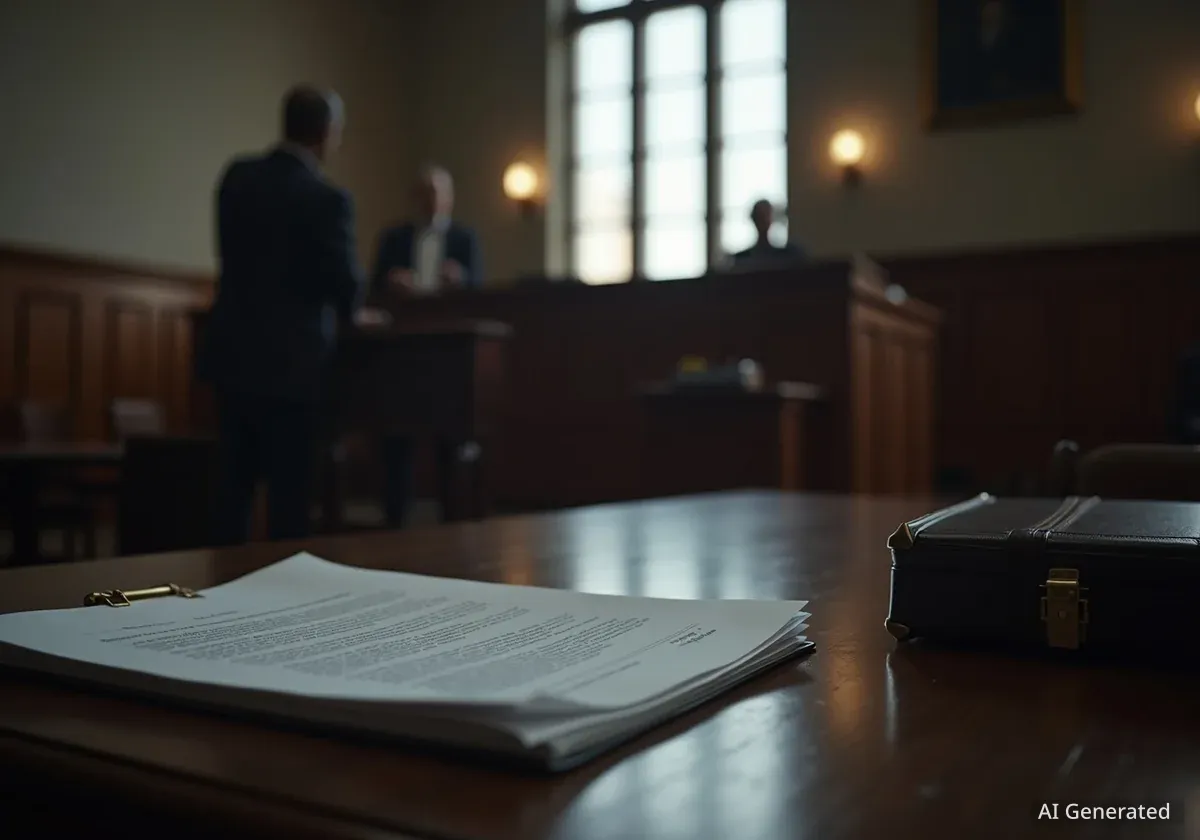Italian prosecutors are investigating serious allegations that valuable artworks owned by the Agnelli family were replaced with forgeries. These claims emerged during a complex inheritance dispute involving the heirs of Gianni Agnelli, the former head of Fiat. The investigation centers on whether original paintings by renowned artists like Monet and de Chirico were swapped with copies at family properties.
Key Takeaways
- Italian prosecutors are investigating claims of art forgery within the Agnelli family.
- Original artworks by Monet, de Chirico, and others may have been replaced with copies.
- The allegations stem from an inheritance dispute following the deaths of Gianni and Marella Agnelli.
- Thirteen specific artworks are central to the investigation, with some copies already found.
- The value of the art collection in a 2004 agreement is also under scrutiny for being potentially deflated.
Investigation Focuses on Missing Masterpieces
The Agnelli family, often called the “Italian Kennedys,” built a vast empire. This included Fiat, Ferrari, and the Juventus football club. Gianni Agnelli, who died in 2003, also amassed a significant art collection. It featured more than 600 works by artists such as Modigliani, Renoir, and Matisse.
After Gianni's death and that of his wife, Marella, in 2019, an inheritance dispute began. Their daughter, Margherita Agnelli de Pahlen, claims her children from her first marriage — John, Lapo, and Ginevra Elkann — deprived her of her rightful share of the fortune. This share, she states, includes artworks assigned to her under a 2004 agreement with Marella.
Key Fact
The Agnelli art collection once contained over 600 works by prominent artists.
Thirteen Works Under Scrutiny
The current investigation centers on 13 artworks that Margherita Agnelli de Pahlen claims are missing. These include significant pieces such as Francis Bacon’s Study for a Pope, Picasso engravings titled Torse de femme, and John Singer Sargent’s A Street in Algiers.
Prosecutors are examining whether these valuable originals were secretly replaced with forgeries. The claims suggest these swaps occurred at various Agnelli family villas.
Witness Accounts and Evidence
Several former staff members have provided statements to investigators. These accounts suggest that paintings were removed or replaced over time. For example, a former employee at the Agnellis’ Rome residence told carabinieri that artworks were taken in 2008 when Marella Agnelli fell ill.
“A former staff member at the Agnellis’ Rome residence told carabinieri that paintings were removed in 2008 when Marella fell ill.”
Another worker at the same Rome residence reported a specific incident. They stated that a painting by Giacomo Balla had been replaced with one of "inferior quality." This suggests that copies might have been substituted for originals.
Transport of Copies and Staff Discontent
Shipping companies also provided information to investigators. They reported being asked to transport copies of artworks from the Rome property. These transports reportedly took place between 2016 and 2018.
Gigi Moncalvo, an author who has written about the Agnelli family, highlighted potential motivations. He stated that former cleaners and other staff who worked in the Agnelli homes were upset with John Elkann. Elkann is the current head of the Agnelli family’s Stellantis automotive group.
Moncalvo explained to The Times, "They were very angry with him. After sacking them, when his grandmother was no longer around to be looked after, he threw them out rather than hiring them at Stellantis.” This suggests a possible motive for staff to provide information to authorities.
Background
Gianni Agnelli was the influential patriarch of the family. He transformed Fiat into a global automotive giant. His family's wealth and influence earned them the nickname "Italian Kennedys."
Discovery of Forgeries and Valuation Discrepancies
Last year, copies of three specific missing works were discovered. These were Giacomo Balla’s The Stairway of Farewells (1908), de Chirico’s Mystery and Melancholy of a Street (1914), and Monet’s Glaçons, effet blanc (Ice floes, white effect). They were found in a vault at Fiat’s former Lingotto plant in Turin.
This discovery occurred after Margherita Agnelli de Pahlen reported them missing. The Balla and de Chirico copies had previously hung in the Agnelli residence in Rome. The Monet copy had been displayed at their Villa Frescot in Turin. The original versions of these paintings remain missing.
Art Valuation Under Question
The 2004 agreement, central to the inheritance dispute, valued the entire art collection. Some sources claim these valuations were deliberately kept low. For instance, Monet’s Glaçons, effet blanc was valued at €4 million in the 2004 accord. However, Sotheby’s later assessed its value at €17.5 million.
Gigi Moncalvo commented on this discrepancy. He stated, “The values were kept low so Marella could pay as little tax as possible.” This suggests a potential financial motive behind the alleged undervaluation.
Financial Discrepancy
Monet's Glaçons, effet blanc was valued at €4 million in 2004, but later assessed at €17.5 million by Sotheby's.
Ongoing Investigation and Possible Theories
Investigators are working to determine several key points. They need to establish if members of the Agnelli family unknowingly displayed copies in their homes. They also seek to identify who ordered the removal of the original artworks and their replacement with forgeries.
One theory under consideration is that the original paintings were moved abroad. Such a transfer would have required official permission from the Italian culture ministry. This permission would ensure the proper legal export of cultural assets.
The case highlights complex issues surrounding wealth, inheritance, and the management of valuable art collections. The outcome of the investigation could have significant implications for the Agnelli family and the art world.
Recent Legal Settlements
In a related development, John Elkann recently settled a separate case. This month, he agreed to perform community service. He also committed to paying €183 million to resolve a matter concerning unpaid inheritance tax. This settlement is distinct from the art forgery investigation but underscores the broader financial and legal complexities surrounding the family's assets.
The investigation is ongoing, and more details are expected to emerge as prosecutors continue their work. The focus remains on uncovering the truth behind the alleged art forgeries and the fate of the missing masterpieces.




